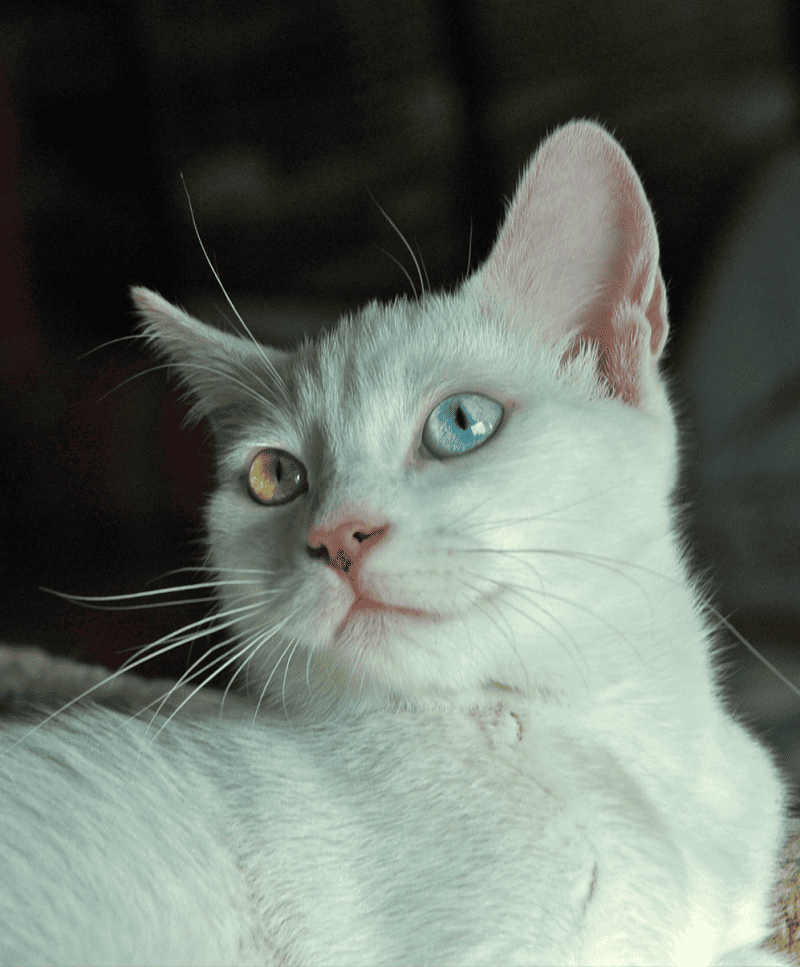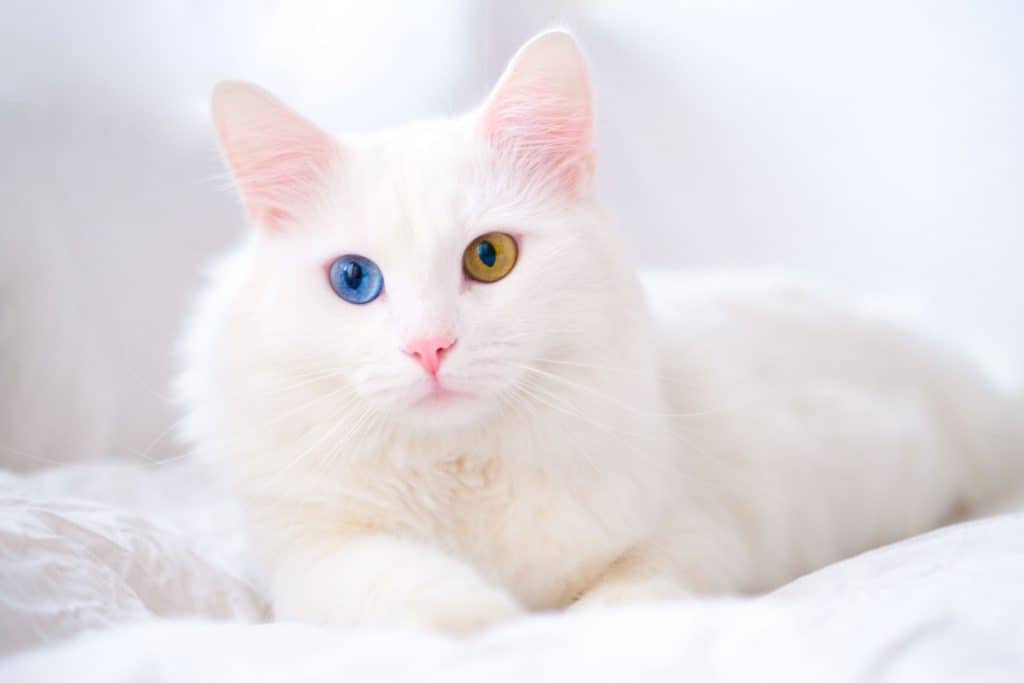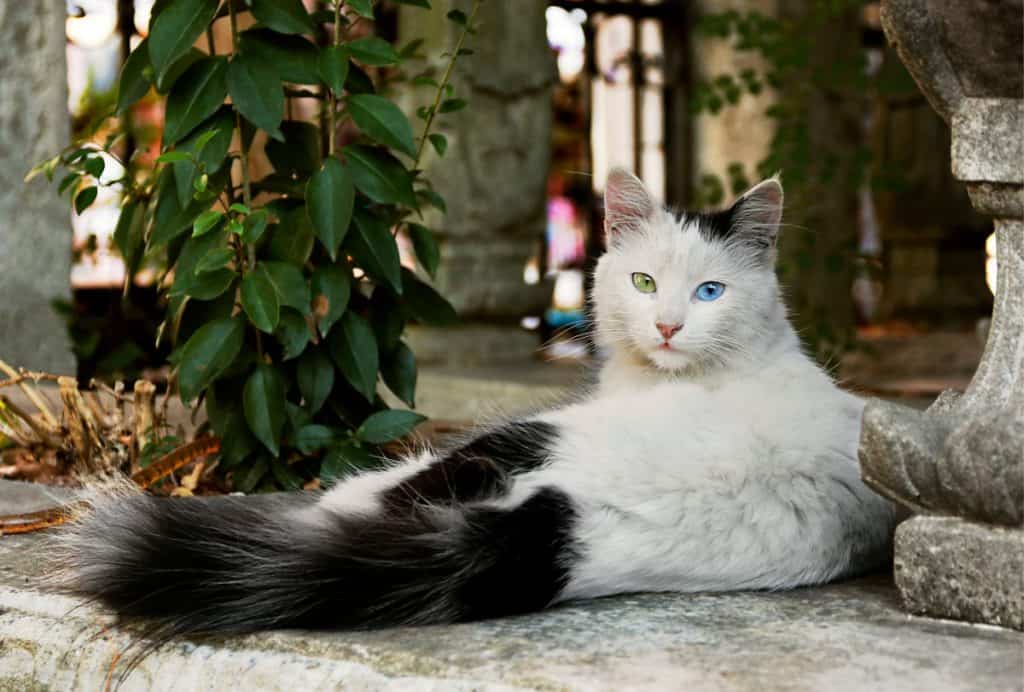Ever been amazed by a cat's gaze? Get ready to be wowed by a cat breed famous for its eye-catching looks and eye color. This special breed is rare and charming, with a beauty that stands out.
The eyes of this breed are truly special, a mix of different colors that captivate. They have a unique charm and beauty that makes them different. Can you guess what these colors could be?
Now, which breed could have such amazing eyes? This breed comes from a land rich in history and tradition, making it as interesting as its birthplace.
But, let's not reveal everything now. Get ready to learn more as we explore the world of this fascinating cat.
The Big Reveal: The Unique Features Of The Turkish Van Cat
Ready for the big reveal? Our captivating cat is none other than the Turkish Van. Born in the Lake Van region of Turkey, this cat is a beauty.
It boasts a white body, with color only on its head and tail.
But what truly makes this breed stand out is its eyes - an enchanting display of heterochromia, where one eye may be a deep, sapphire blue while the other glows a warm, amber hue.
That's the Turkish Van for you.
Don't be fooled, though. The Turkish Van isn't just about looks. This cat breed is a lively one. Known for its energy, it loves to play and socialize.
So, while its eyes may draw you in, its personality will make you stay.

Personality Traits Beyond the Turkish Van's Striking Gaze
Contrary to some beliefs, the Turkish Van's diverse eye colors don't signify diverse behaviors. This breed consistently charms its human companions with its friendly disposition and energetic personality.
Regardless of the captivating colors of their eyes, Turkish Vans are affectionate, intelligent, and adventurous cats.
So, don't let those stunning eyes fool you into thinking they're all about the mystique – these cats have warm hearts and a zest for life that matches their vibrant eyes.
The Genetic Marvel Behind the Turkish Van
Firstly, let's talk about the gene that influences their unique look.
It's called the piebald spotting gene, and it's what gives them their distinct pattern - white bodies with colored patches on the head and tail.
This gene isn't unique to Turkish Vans; it also appears in other species like horses and ball pythons, and in other breeds of cats.
Next, let's delve into those captivating eyes. The variability of eye color in Turkish Vans is a result of this same gene.
Basically, the amount of white in the cat's coat can affect the eye color.
Cats with less white can have blue eyes, while cats with more white can have amber eyes or even one of each - this is known as heterochromia.
Finally, a quick note on deafness. Despite their light-colored fur and unusual eyes, Turkish Vans are not typically prone to deafness. This is different from some other breeds, where these traits can be associated with hearing issues. So, no need to worry - your Turkish Van is likely to be a good listener!
Finally, a quick note on deafness. Despite their light-colored fur and unusual eyes, Turkish Vans are not typically prone to deafness.
This is different from some other breeds, where these traits can be associated with hearing issues. So, no need to worry - your Turkish Van is likely to be a good listener!

Discover More About The Turkish Van Cat
Let's spice things up with some intriguing facts about the Turkish Van. These playful felines are full of surprises. Here's what you need to know.
Firstly, let's clear the air. The Turkish Van, Turkish Angora, and Van cat are three distinct breeds.
They may have similar names, but each breed has its own unique charm.
Originally, Turkish Vans were known as Turkish cats. However, to avoid any mix-up with the Turkish Angora, they now have their distinctive title.
One fascinating trait of the Turkish Van is its peculiar coat. It's not just semi-long and luscious, but also water-repellant! This feature only boosts their fondness for water.
Another interesting fact about this breed is their slow maturity. It takes them about three to five years to reach their full size. But don't worry, they retain their playful spirit throughout their growth journey.
Lastly, Turkish Vans are not just cats; they are national treasures in Turkey.
Their breed is preserved meticulously with the assistance of the Turkish College of Agriculture and the Ankara Zoo.
So, when you bring home a Turkish Van, you're not just adopting a cat, but a piece of treasured heritage.
Caring for Your Turkish Van: From Grooming to Nutrition
Caring for a Turkish Van cat isn't as demanding as you might think. Thanks to their semi-longhaired, single coat, the grooming needs of a Turkish Van are minimal.
A brush once a week is usually sufficient. However, if your cat is shedding more than usual, a few extra brushings will help keep their coat in tip-top condition.
Remember to reward your feline friend after each grooming session. This positive reinforcement can help them grow accustomed to the grooming process, particularly if started at a young age.
Apart from grooming, a vital aspect of caring for your Turkish Van is their diet. Cats require nutritious, age-appropriate food. Consult with your vet to determine the right type and amount of food your cat needs.
Overfeeding your cat can lead to weight gain or obesity, so it's crucial to monitor your cat's diet closely. Your vet will be able to provide tailored recommendations for your Turkish Van to ensure they remain healthy and active.

The Turkish Van: More Than Just a Beautiful Face
In conclusion, the Turkish Van, with its striking mismatched eyes, is indeed a sight to behold. But beyond their enchanting gaze, Turkish Vans are delightful, friendly, and robust pets.
Do you own a Turkish Van or planning to adopt one? We'd love to hear your experiences and thoughts.
The beauty of the Turkish Van is certainly spellbinding, but the bond they create with their human companions is the real magic.
You might also like:
This Rare Cat Color is Almost Impossible to Find!
Do Ragdolls Always Have Blue Eyes?
Some elements on this page may have been created by our team using advanced AI to provide you with top-notch cat inspired ideas. Read more about our AI Content Policy.
